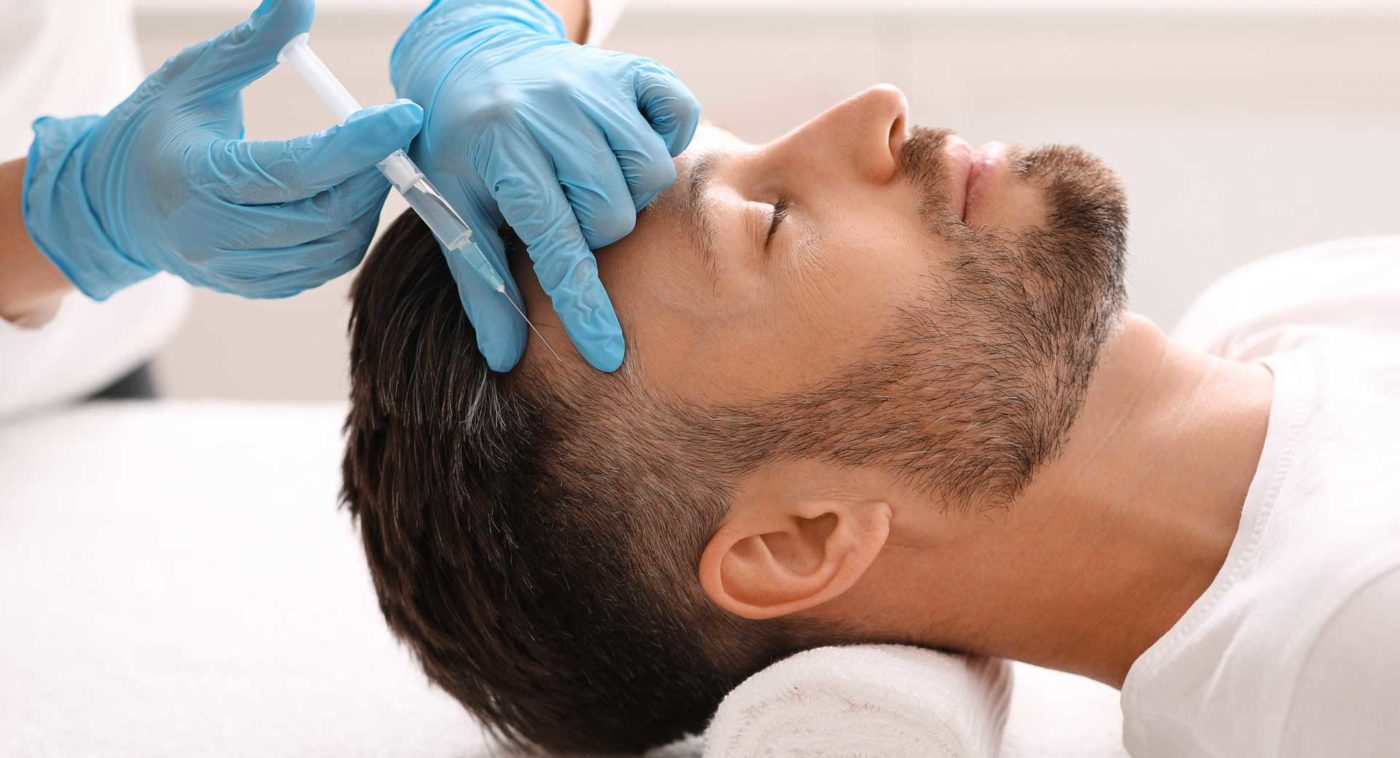Back in the 80’s it was observed that people getting cosmetic treatments with BOTOX were reporting an improvement in migraines’ severity and frequency. Clinical trials were then designed to see if BOTOX could be used to help prevent migraines.
BOTOX is a protein called Onabotulinum toxin A. This protein is produced by a bacteria called Clostridium Botulinum. The protein used for medical or cosmetic purposes is a purified form of this protein.
BOTOX has been used for decades for cosmetic purposes, treating wrinkles and fine lines, but also for medical conditions. Some examples include strabismus, excessive sweating, spasticity and of course, chronic migraines.
How Does It Work?
In order to understand how BOTOX works we must first review how muscles contract. In order for a muscle to contract it requires a signal from an adjacent nerve. An electric current runs down the nerve that reaches the muscle. The nerve ‘communicates’ with the muscle by releasing chemical messengers called neurotransmitters. These neurotransmitters bind to specific receptors on the muscle, prompting it to contract. BOTOX blocks these neurotransmitters, resulting in the nerve carrying the electric signal and the muscle to no longer communicate, preventing the muscle contraction from occurring.
We know that part of what causes chronic migraines is that the nerves become hypersensitive. These nerves are on ‘high alert’ and release molecules that, in turn, lead to inflammation. BOTOX blocks these pain signals. Studies done on animals have shown that BOTOX is able to modify the way nerves in the face and neck communicate with each other, helping to reduce the severity of the pain felt.
BOTOX use for the treatment of chronic migraine has been approved by Health Canada since 2011. Many clinical trials have proven its safety and efficacy for the treatment of chronic migraine, bringing relief to people who suffer from this condition.
BOTOX isn’t for everyone with migraines or other types of headaches. It is only approved for patients who have been properly assessed by a medical doctor and diagnosed with chronic migraine. Chronic migraine is the most severe form of migraine. It is estimated that 1 to 2 % of the general population suffers from chronic migraine. These patients have more than 15 days of headaches a month, of which at least 8 are migraines.
For patients diagnosed with chronic migraine BOTOX is injected in very specific locations on the head, neck and shoulders following a standardized and validated protocol called the PREEMPT (Phase III Research Evaluating Migraine Prophylaxis Therapy) protocol. This protocol can be carried out by a medical doctor specially trained to perform this procedure.
In studies, nearly 50% of patients reported an improvement in the frequency and intensity of migraines. As an example, if a patient was experiencing a migraine 20 days a month he or she would now only experience a migraine 10 days a month. Additionally the attacks are considered less debilitating. For reasons that are poorly understood some people respond better than others to the BOTOX injection treatment.
BOTOX is an option that should be considered in patients living with chronic migraine that have failed oral preventative medications. Generally, more than 3 cycles of injections are required prior to seeing any benefit, since the effects of the treatments appear to be cumulative. Evaluating the benefits of BOTOX injections is done with sequential questionnaires and medical assessments, to see how the patient is able to resume their lives.
BOTOX itself is broken down by the body over a number of weeks which stops its effects. That being said, some patients respond so well to BOTOX that the benefits are sustained over time. Migraine is a fluctuating and complex condition and even if BOTOX provides excellent relief there may still be difficult periods over time.
Not any medical doctor can inject BOTOX for migraine. Although it is not a difficult procedure it needs to be done by someone who has the proper training and experience in carrying out the injections as per the PREEMPT protocol.
Most third-party insurers will cover the cost of BOTOX provided a patient has been diagnosed with chronic migraine and has previously tried three (3) oral preventive medications for migraine without benefit, intolerable side-effects or contraindications. Some of these oral preventive medications may include beta-blockers, tricyclic antidepressants or calcium channel blockers. Note that many of these oral medications have more side-effects than BOTOX. Furthermore, in order to be covered, the BOTOX injections must be carried out by a medical doctor with the appropriate qualifications and experience.
At Pacifica MD we are fortunate to be able to obtain therapeutic BOTOX to treat chronic migraine at a reduced cost. If you don’t have third-party coverage and have to pay out-of-pocket you can expect the cost of the BOTOX injections required for the PREEMPT protocol to be between $550 and $600. We can assist you in obtaining coverage for the BOTOX ahead of time with your third-party insurer. The physician injection fee is unfortunately not covered.
To find out if you are a good candidate for BOTOX injections for chronic migraine click here to book your consultation with Dr. Crisci today.
You do not require a referral from another doctor.
Take The Headache Impact Test (HIT6)Source: Migraine Canada
